Toyota Hilux review and buyer’s guide
The Hilux is more than just an immensely popular 4X4 dual-cab ute here in Australia, it’s an icon. Toyota Hilux offers reliability, towing, good resale value and occasional family duties.
The Toyota Hilux is the first vehicle you think of when someone asks what new ute you’re thinking about buying.
It’s only after you’ve thought about Hilux do you typically remember there’s the Ford Ranger >>, the Mitsubishi Triton >> or the Mazda BT-50 >>.
Alternatively, if you’re still on the fence about what type of tradie vehicle you need, it might be worth a look at the Hyundai Staria-Load work van >>
The success of dual-cab utes is why, if you want to make it (commercially) as a mainstream car manufacturer in Australia right now, you need to be offering a 4X4 dual-cab ute. Even Kia is getting a ute >>.
Toyota Hilux has been the best-selling dual-cab 4X4 ute for years. Month after month, year after year it has been the go-to choice - until Ranger came along and ruined the winning streak in 2023.
This segment is the largest single segment in the country in terms of concentration of volume. Meaning, there are fewer dual-cab ute models on sale compared with medium SUVs, so the dilution among the medium SUVs is greater.
During 2023, Aussie buyers took delivery of 208,716 new dual-cab 4x4 utes, according to VFACTS data. That’s 17.2 per cent of the overall 1.2 million vehicles that were delivered throughout the year. The segment is more popular than even the mid-size SUV class (203,414 deliveries), despite comprising fewer nameplates.
Toyota is one of the early birds and arguably one of the pioneers of this vehicle category. It has been selling its HiLux 4x4 dual-cab ute in Australia since 1982. This means it has extensive experience in this area, purely because it has been in this field for so long.
That doesn’t necessarily mean the current model is the best in its class for every given criteria, though. But it should be capable of getting close, right?
A new Toyota Hilux is coming for 2026…
In typical Toyota form, it seems like the new Hilux will not actually be that new - it’s the not the King of Mediocrity for no good reason.
According to various reports an “spy photos”, it appears the next phase of the Hilux’s future as the second most popular vehicle in Australia, is going to be largely the same as it is now, but with different hair and make-up.
It’s looking like the next iteration of Hilux will be based on the existing platform, meaning it’ll use the same chassis, which means the same hardpoints for the suspension and driveline, as well as the powertrain. What does that mean? Well…
In the same way everybody (seemingly) was underwhelmed to learn the new LandCruiser Prado kept the same 2.8-litre turbo-diesel 4-cylinder from the 150 Series, the new Hilux is quite likely going to retain that same 2.8-litre turbo-diesel.
It will also carry over the 48-volt ultra-mild hybrid battery-starter-motor system from the current and outgoing Hilux range, which you can read more about in the rest of this review. It would be a surprise if Hilux moves to a permanent 4-wheel drive transmission, too, so expect the same rudimentary 4X4 system you’re already used to on the current model.
What will be different, however, is that this time around it will contain the same AdBlue emissions treatment system as is now in the Prado and which is proliferating all new-generation diesel utes in Australia.
What will be new on the Hilux is the interior, and the front-end styling. Being on the same platform, you’ll still have largely the same amount of cabin legroom.
The tray will be probably be largely the same width, depth and height, but there is a chance, to compete with more modern rivals, that they’ve made the effort to expand it slightly to accommodate an 1156 x 1156mm pallet. Just don’t hold your breath for it.
But of course you can guarantee the price will increase marginally over the current model. Although, given that Ranger Wildtrak is an $80K business expense and the Raptor is a $90,000 trophy truck these days, this won’t come as much of a shock - nor a concern to many buyers.
It’s also a fair expectation that the GR Sport version of Hilux will return to make Raptor sales that little bit harder for Ford to achieve.
FEATURES & PRICING
Today’s model is offered in 8 different forms, strictly in terms of 4x4 dual-cab models (excluding cab-chassis). All feature a diesel engine – either a 2.4L or 2.8L – and, interestingly, you can still get a six-speed manual if you don’t like automatics.
To open the range, the WorkMate features a 2.4-litre turbo-diesel four-cylinder that develops 110kW and 400Nm. It’s not the strongest power but 400Nm of torque is decent, particularly for a lower-spec model.
Fuel economy is rated at 7.1L/100km on the combined cycle when optioned with the manual, while the six-speed auto consumes an average of 7.8L/100km. More importantly, the manual emits fewer emissions.
A common maximum threshold for emissions output to big fleet companies is 200g/km. With the manual, it passes under quite easily with a rating of 188g/km on the combined cycle. However, the auto overshoots it, with a rating of 211g/km.
Stepping up to the SR auto doesn’t have a big impact on emissions, with the auto stamped at 207g/km and the manual listed at 196g/km, despite featuring the bigger 2.8-litre engine that offers a lot more power and torque.
With 150kW, the 2.8L unit is pretty gutsy for its class. Auto models get the full 500Nm as well, which is strong for its class and for a four-cylinder engine. Manual versions of the 2.8 are capped at 420Nm to conserve the clutch and gearbox.
Fuel consumption figures for the 2.8L engine are not all that different from the 2.4L either, with the manual rated at 7.4L/100km (7.7 for the heavier SR5) and the auto rated at 7.9L/100km across the board.
These figures are about average for this segment, with some competitors, such as the new Mitsubishi Triton GSR and its 2.4L engine using slightly less, at 7.7L/100km for the flagship automatic. It produces 150kW and 470Nm.
Sitting at the upper-end of the range is the very popular SR5. Whether you’re a busy tradie or site manager, or you simply need the practicality of a tray bed but want SUV-like cabin comfort, the SR5 is the best balance in the range.
Toyota only offers its 2.8L engine with the SR5, and you can opt for either a six-speed manual or automatic. It’s the smart buy because prices aren’t through the roof, kicking off from the very low $60,000 mark (before on-roads), yet it offers decent ‘luxury’ appointments and personality, and good all-round capability.
Sitting slightly above the SR5 is the Rogue. Toyota initially launched this as the flagship variant, bringing together some of the refinement and luxury-inspired features of the SR5 while providing a unique look on the outside, with bigger wheel arches, and a nudge in capability.
The Rogue has seemed less appealing since the GR Sport arrived; it's about $10k more than the SR5, uses the same powertrain, but the fuel consumption is pushed up to 8.4L/100km due to inferior aerodynamics – ground clearance is lifted to 265mm from 216mm, compared with the SR5.
At the top of the range is the GR Sport. It’s more about off-road recreation rather than pure workhorse duties, and comes equipped with bespoke KYB sports suspension, wider front and rear track, and GR-branded brakes and body trimmings.
What it also comes with is a tuned version of the 2.8L engine, with power turned up to 165kW and torque lifted to 550Nm. It comes in auto form only, with fuel consumption up by only 0.2L/100km over the SR5, to 8.1L/100km, and emissions are bumped up to 213g/km (from 207). It’s priced $3230 north of the Rogue and $11,500 more than the SR5.
Here’s the breakdown of what each model grade gets relative to the previous one.
Workmate dual-cab 4X4 auto | $54,730 approx.
EXTERIOR
Automatic headlamps
Halogen Daytime Running Lamps (DRLs)
Front tow hooks
Remote keyless entry
INTERIOR
Power front windows, driver's automatic up/down window
Air conditioning – manual
8-inch touchscreen, 2x speakers
USB input
Cloth seats, standard driver and front passenger seats
Vinyl floor
4.2-inch driver’s display
TECH
Apple CarPlay and Android Auto
Satellite navigation and DAB+ digital radio
“Driver Assist: Lane Departure Alert, AEB (incl. pedestrian & cyclist), speed sign recognition
Adaptive cruise control
SR dual-cab 4X4 manual | $57,000 approx. (auto + $2600 | $59,000 approx.)
INTERIOR
Front air-conditioned cooler box
Premium driver and front passenger bucket seats
Reversing camera
6 speakers
EXTERIOR
Drive mode select
Rear differential lock
Variable intermittent windscreen wipers
Parking sensors
SR5 dual-cab 4X4 | $65,260 approx.
INTERIOR
Wireless phone charger
Rear cup holders – in armrest
‘Driver Assist’: Blindspot monitor, rear cross traffic alert , panoramic view monitor
Push-button start
Premium gear knob & steering wheel
Carpet floor
Rear air vent (singular)
EXTERIOR
Towbar
Automatic headlamp levelling
Front LED fog lamps
LED daytime running lamps (DRLs)
Electrically retractable side mirror
Black sports bar
Keyless entry
Rogue dual-cab 4X4 | $76,415 approx.
INTERIOR
JBL premium sound system, 9 speakers
Panoramic View Monitor
EXTERIOR
Towbar tongue and tow ball
Rear recovery points
Skid plate
Rock rails
GR Sport dual-cab 4X4 | $79,270 approx.
INTERIOR
GR Sport suede and leather accented seats
GR Sport driver and passenger bucket seats
GR Sport leather accented door trim
GR Sport steering wheel
GR Sport gear knob
Steering wheel paddle shifters
EXTERIOR
GR Sport bedliner
Rear recovery points
Skid plate
Rock rails
GR Sport design front bumper, grille and overfenders
ENGINE
The 2.8-litre turbo-diesel engine is moderately powerful without being a class leader like the grunt-factory that is the Ranger’s 3-litre V6 which offers 18 per cent more peak power.
The Mitsubishi Triton’s bi-turbo 4-cylinder also makes 150kW using 20 per cent less cubic capacity, making it 6 per cent more efficient in terms of brake mean effective pressure. Essentially Triton makes more power per cylinder than the old Hilux 2.8 motor.
But Toyota has recently introduced a new gizmo to its diesel powertrain - a 48-volt battery-motor system that they’re calling ‘V-Active’. While it might seem like a hybrid system, it’s not. It’s basically an ignition stop-start setup that uses a:
motor generator, 48-volt battery and DC/DC converter… which allows for the fitment of a stop-start system to the turbo-diesel engine
The V-Active system costs $590 and is not optional on 4x4 dual-cab SR, SR5 and Rogue variants. So what is this system actually doing now that you’re stuck with it?
It’s essentially powering the vehicle’s electrical systems during idle, meaning the engine reduces its RPM from 720 to 600 revs, and the battery powers things like the air-conditioning which typically run off the alternator, which is run by the engine demanding more fuel to burn to make that electricity.
Just on this point, modern vehicles, especially diesels, use a negligible amount of fuel at idle. So the advantages it offers you in terms of fuel savings are going to be just as hard to quantify.
This is the fuel-saving claim Toyota makes:
addition of V-Active technology allows for the fitment of a stop-start system… which plays a role in helping reduce fuel consumption by up to approximately 10 per cent compared to 2.8-litre engines without [it]
You’re looking at something like $9 per week this kind of system is purportedly going to save you in fuel, but that’s going to take more than 12 months to recoup the $590 premium you paid - hypothetically. That’s using the laboratory bench testing claims and using the Australian annual average driving range of 15,000km as a guide.
And is it going to make any financial difference on a $76,400 Hilux Rogue? Not really. Simply driving like a lead-foot and/or with large payloads is going to negate that fuel saving.
The Hilux’s system captures kinetic energy via braking in the same way its hybrid system does, only it works in parallel with the diesel engine to accelerate from stationary. As opposed to the battery and motor working in series, to accelerate up to about 2-30km/h as in, for instance, the RAV4 hybrid or Corolla hybrid.
In simpler terms, this 48-volt system in Hilux does not qualify as a conventional hybrid (because otherwise Toyota wouldn’t have resisted calling it that) and certainly they don’t want to go calling it the ‘mild hybrid’ system that it really is.
This V-Active system contributes just 12 kilowatts and 65 Newton-metres of torque to the powertrain, which is so inconsequential to the overall output. It’s the mildest of mild hybrid arrangements, especially when you consider this is the output of 2.6 typical 18-volt power tool batteries.
Other problems here include the worn-out 48-volt battery is not going to be covered by warranty, which means another costly replacement for the consumer. There goes your fuel saving, yet again. And 48-volt batteries are rarely stocked, and they’re comparatively expensive to 12-volt jobs.
A typical 12-volt lead-acid battery in vehicles with stop-start tech are generally around the $500 mark on their own. Can you imagine the mark-up if you were to get the battery replaced at the dealer?
Overall, this V-Active system is not going to be a specific detriment to owning or using the Hilux specifically, but it does add complexity to the powertrain. It’s unlikely to be anything other than reliable, but just saying that word these days in relation to Toyota comes with caveats.
Certainly, don’t go buying a Hilux for this 48-volt starter-motor/alternator middle-man, over a Ranger or Triton, because it isn’t really a distinct economical advantage over such utes. It’s mostly Toyota Australia’s marketing hype over-exaggerating the mildest of mild-hybrid systems, at best.
Apart from that, the 2.8 diesel in Hilux will be pretty reliable and decently grunty without being the most powerful, nor most efficient. And it can only tow/carry what the more affordable Triton can anyway.
TOWING
The word ‘ute’ is short for utility and most variants here perform at an average or above level, for the class. The braked towing capacity is 3500kg for all variants and transmission options in the 4x4 dual-cab category, including the base 2.4L WorkMate in manual and auto form.
This is the maximum allowed capacity for any passenger vehicle of this size in Australia, so the fact Toyota has made sure all of its dual-cab 4x4 models meet this standard is only a good thing. However, there is a bit more to it.
If payload is your top priority, then the base WorkMate offers the most, at 1010kg when equipped with the manual. Going for the auto drops that down to 1000kg, and in fact the SR5 auto is rated the same.
Sticking with the SR5 auto, the gross combination mass is 5850kg. Subtract its kerb weight of 2110kg, and then subtract a full 3500kg for towing, it leaves just 240kg for passengers, a tow bar, and any accessories. You get a very similar result from the SR and WorkMate models as well.
This is not a good left-over capacity for this class, with some rivals leaving around 500kg for payload/passengers and gear. For the purposes of carrying utility, the HiLux does not perform all that well.
Before you head on holidays or load up the ute for work, check out LAZY LOADING: How packing your ute (badly) can be disastrous >>
OFF-ROAD
All 4x4 models come with a dual-range transfer case with low-range gearing. This provides excellent low-speed torque for churning through thick mud or sand, and facilitates steady downhill stability and crawling progress up very steep climbs. Hill descent control is also standard on the SR and above.
All models feature skid plates at the front to protect vital engine components and in the middle to protect the gearbox. But as standard you get 216mm of ground clearance, at minimum, which is a touch below average.
Further than that, the SR grades and upward come with a rear diff lock and different driving modes to further boost capability. In the end, the Rogue and GR Sport are the pick if off-roading is a regular and important activity to you. Increased ground clearance and enhanced suspension increase their capability above the rest of the range.
DRIVING
The 2.8-litre engine is relatively smooth and quiet for what it is. Toyota made some revisions to this engine in recent years, bumping power and torque up to 150kW and 500Nm, while reducing vibration and harshness levels. And soon, Toyota Australia is going to offer a mild-hybrid version to further enhance economy and drivability, it says.
As it is, the 2.8 hums along at highway speed producing a faint diesel clatter in the background, and requires merely 1700rpm to maintain 100km/h. This is great for families because it means long-distance touring is less likely to become tiring and bothersome.
When it comes to tackling bends, the HiLux does a commendable job in terms of maintaining good body stability, your desired cornering line, and withstanding some lateral force, for this class. It’s never going to handle as well as a properly-sorted SUV, partly due to live-axle rear suspension and leaf springs, but it is about as good as it gets for a dual-cab ute at the current standards.
The steering is precise enough to provide decent confidence and accuracy, and the front corners don’t dip down as you tip it in. It feels comfortable going around corners and not completely out of its depth. This is not something that could be said of past generation models and some current competitors.
I'll help you save thousands on a new Toyota Hilux here
Just fill in this form.
No more car dealership rip-offs.
Greater transparency.
Less stress.
INTERIOR
Cabin comfort and features
The latest HiLux doesn’t present the most refined interior of its class. But, and perhaps most importantly, all fixtures and fittings are made to be robust and hard-wearing. There is lots of hard plastic all over the dash and door trims, but again, this stuff is durable and thick.
Entry models come with a plastic floor so you can easily wipe it down, or literally hose it out so long as you have fine control of the water flow. A number of cup holders are at the ready for all passengers except the middle-rear, and Toyota is making some changes for the 2024 model to increase the number of USB charging ports.
The driving position is a little off for shorter drivers, as the steering column doesn’t offer the widest span of adjustment and the seat sits a bit high. But overall passenger space and legroom, front and rear, feels about as good as it gets for this class, if slightly below the Ford Ranger.
In-cabin technology isn't great. The touch-screen is pretty small in comparison to many others, and its operation is basic and does without any excitement or depth. Even the instrument cluster is still largely analogue, but that might be a good thing to some traditional buyers.
RESALE VALUE
The Toyota HiLux offers the best resale value of any current ute [insert link to resale value article]. This alone could be a huge factor in your buying decision, as it means you’re likely to get more money back from your initial spend compared with any other ute in this segment.
It not only provides peace of mind simply knowing that fact, receiving a larger dividend at the end will help sooth the pain of buying your next new vehicle.
SAFETY
The Toyota Hilux was last tested by ANCAP back in 2019 and you can download its crash test report here >>. In the context of other rival utes, it is technically a 5-star rated ute (which is lucky otherwise Toyota wouldn’t be able to sell them to companies operating in industry where 5 stars is a fleet-wide mandate, such as in mining).
Back in 2019, Hilux was subjected to tests that aren’t considered as stringent as they are by 2024 standards, which a Mitsubishi Triton has been tested to. So to suggest Hilux is notionally safer than a Triton is (at best) misleading or (at worst) abject bullshit.
However, there is one consideration and that is that in 2019 the frontal offset test (with a 40 per cent overlap of the Hilux on the aluminium honeycomb block), the test was conducted at 60km/h. In 2022 and 2024, it is conducted at 50km/h. There are, unfortunately, more tests each vehicle is subjected to in 2024, so by that scenario, Triton remains the overall safer vehicle tested.
Hilux scored pretty well in all destructive tests back in 2019, with ‘acceptable’ ratings for the front driver in detected chest and leg loads, and the rear passenger in the full width 50km/h crash test was also rated as ‘acceptable’ for occupant protection.
Side impact and oblique pole tests earned Hilux ‘good’ scores for both and top marks, although so it should against a 1400kg car-sized trolley and not the 1900kg SUV-sized trolley used by the IIHS in the US (which hasn’t tested the Hilux, unfortunately).
None of Hilux’s emergency lane keeping features were tested back in 2019, so we simply cannot really know how it performs in this way compared with something more modern like a Ranger or Hilux, although Hilux’s auto emergency braking system did well in its respective tests at that time. Although in 2022’s protocol period (Ranger), and 2024 (Triton), there are many more scenarios those respective vehicles are tested against.
After a second stab at the brakes, Hilux’s AEB system just avoids contact
Overall, a Hilux in 2024 is what you would consider pretty safe, but not to the same standard the a Triton, Mazda BT-50 or Ford Ranger are considered safe. Hilux isn’t bad, but it’s not the best you can get - which is par for this particular course.
Hilux’s 5-star ANCAP safety rating expires at the end of December 2025.
MAIN COMPETITORS
FORD RANGER
Ranger V6 is one sexy ute, evidenced by toppling Hilux as Australia’s most popular dual-cab ute in 2023.
The V6 is the one you buy if maximum platform performance is needed because it’ll be worked hard from day 1. Stay below the 3.5-tonne towing limit for safety, but Ranger is inherently quite stable thanks to 2.3t kerb weight.
A V6 XLT is a solid multi-purpose work vehicle and family conveyance, whereas the 2-litre turbo four-cyl seems a bit highly strung. Try the XLS if a cheaper work-only second vehicle is needed and comfort is not top priority.
Ranger is a good workhorse and a great tow platform, plus its off-road credentials are awesome. It’s just let down by Ford’s reputation for average reliability, and lacklustre customer support. But at least Ranger resale value seems strong.
MITSUBISHI TRITON
You’ll save thousands on a Triton over and equivalent Ranger, and with a 3500kg maximum braked towing capacity the towing field is level.
Mitsubishi’s ‘Super Select II’ transmission is a master stroke, allowing 4WD activation below 100km/h and use of AWD (4H) on high-traction surfaces - thanks to a proper centre differential. This is great for use on tarmac in heavy rain, on gravel roads, steep driveways, wet sealed roads, icy conditions, and general bush tracks.
The 2.4 turbo-diesel is now more powerful thanks to now bi-turbo forced induction. Fuel economy improvements should follow as well as good load-carrying and family-friendly cabin. Triton remains the best value ute on sale.
For more on new Mitsubishi Triton, click here >>
KIA TASMAN:
PRO: Premium interior, lots of modern equipment, 4A all-wheel drivetrain, affordable mid-spec variants, excellent customer support, factory-fitted brake controller, widest tray among rivals
CON: Lacks higher torque output of rivals for extreme towing, looks splay-eyed
Comment:
Tasman might have taken an eternity to finally arrive, but now that’s it’s here, it’s going to prove a compelling value proposition against the Mazda BT-50, Mitsubishi Triton and possibly even the Isuzu D-Max. Tasman might have a lot to prove to ute buyers like yourself, but the fact an SX+ costs $1000 less and already offers equipment on a BT-50 GT costing $66K.
Tasman does lots of clever little things like print the vehicle’s dimensions under the centre console lid, comes with a built-in electronic brake controller which means you not only have that function when towing, but you also don’t have to deal with a third-party in terms of warranty. Early examples seem to show it’s quite proficient off-road and decent for plenty of moderate and heavy towing situations; maybe not the fastest or noisiest, but good enough for most conservative drivers.
CLICK HERE FOR MORE ON KIA TASMAN >>
MAZDA BT-50
BT-50 shares platform fundamentals with Isuzu D-Max, but the Mazda is the pick, not only for saving money on the same basic package, but also because the BT has the much nicer interior.
If your ute will be used as more of a personal transport vehicle, perhaps only occasionally roughing it in hard-to-access places or in unpredictable circumstances, a BT-50 will offer a decent place to sit in for hours on end with multiple people on board.
It’ll also double as a very comfy suburban-dwelling family transport for weekend adventuring. Good towing platform with a 3500kg braked limit.
Click here for more on Mazda BT-50 >>
CONCLUSION
Toyota offers a wide spread of variants and body styles, including cab-chassis even in SR5 form and with four doors and five seats. You can get a manual or auto in almost every trim level, and packaging and features are pretty good for the class; not great but good enough.
With these facts in mind it is easy to see why the HiLux is such a popular model. It doesn’t excel in any particular area except resale value, but the average scores across the board place it high in the overall standings as a safe, practical, durable and capable dual-cab ute.





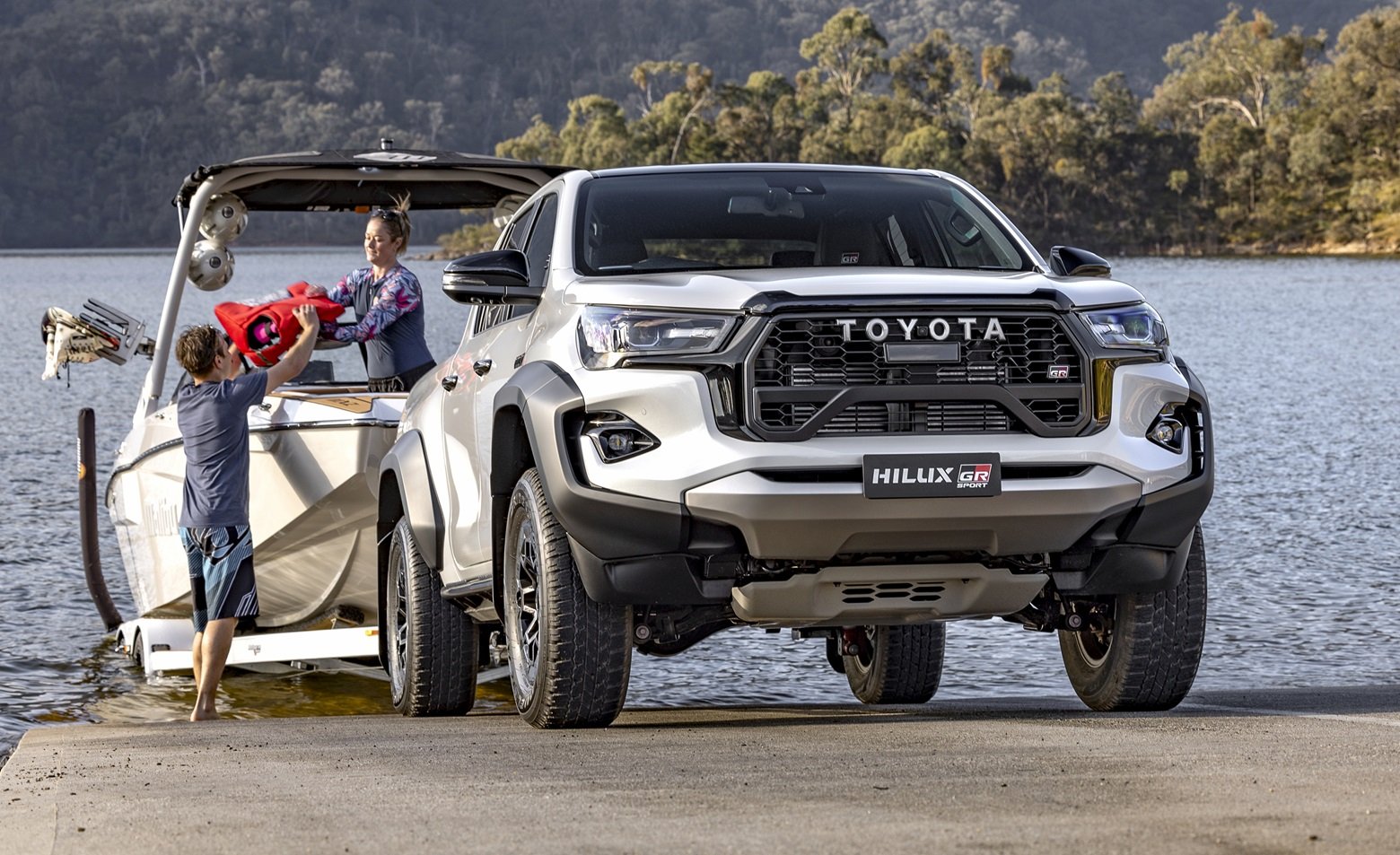
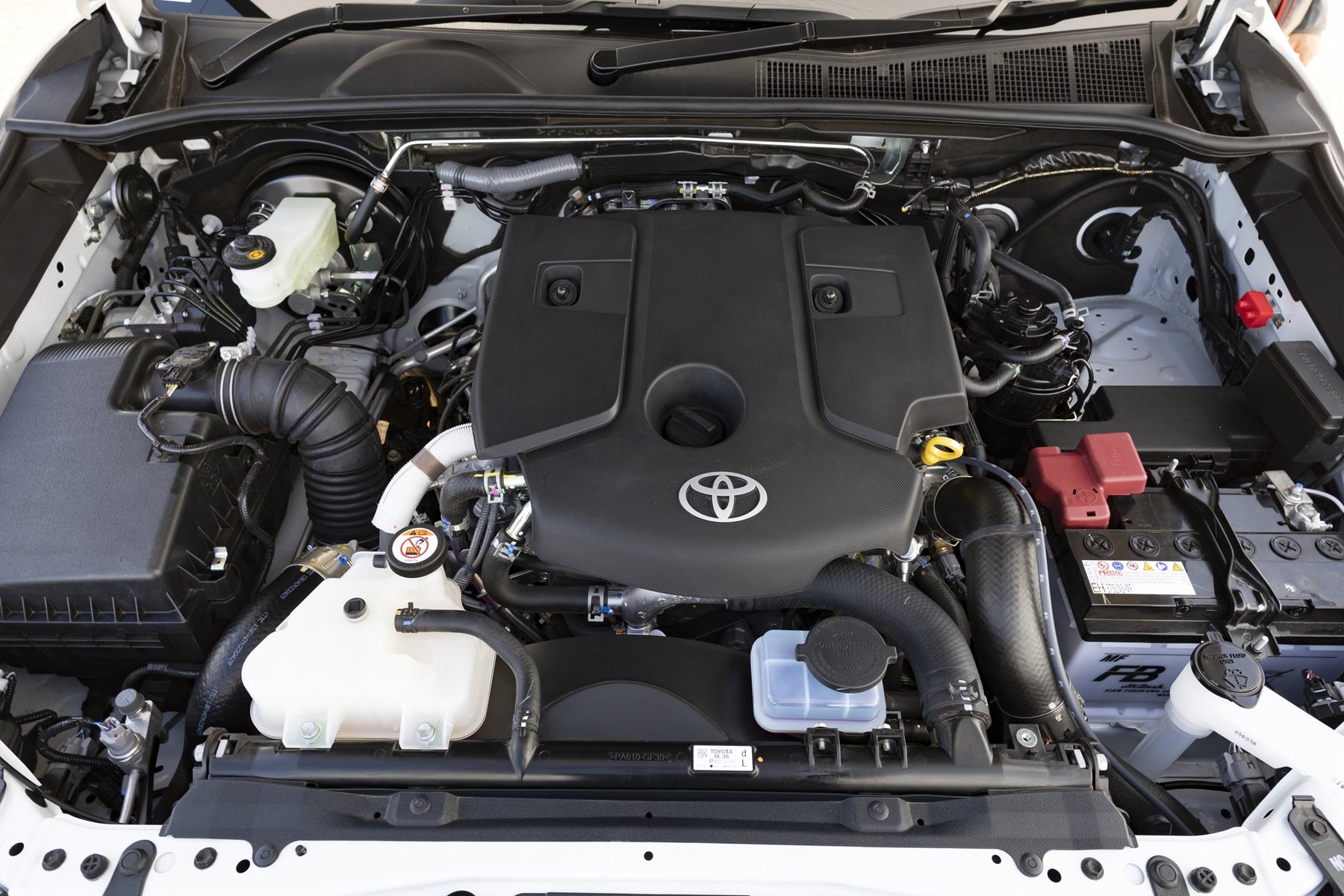

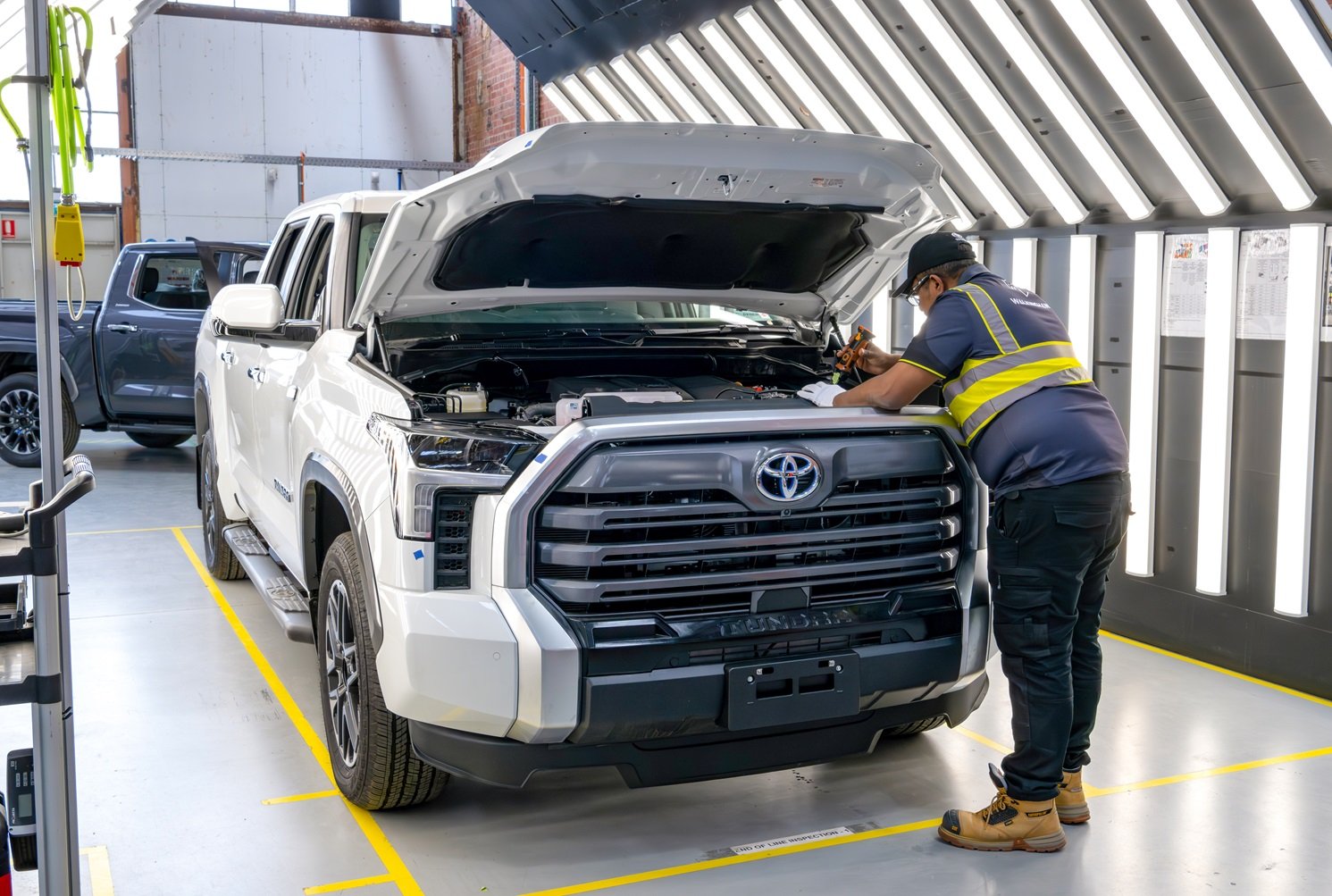
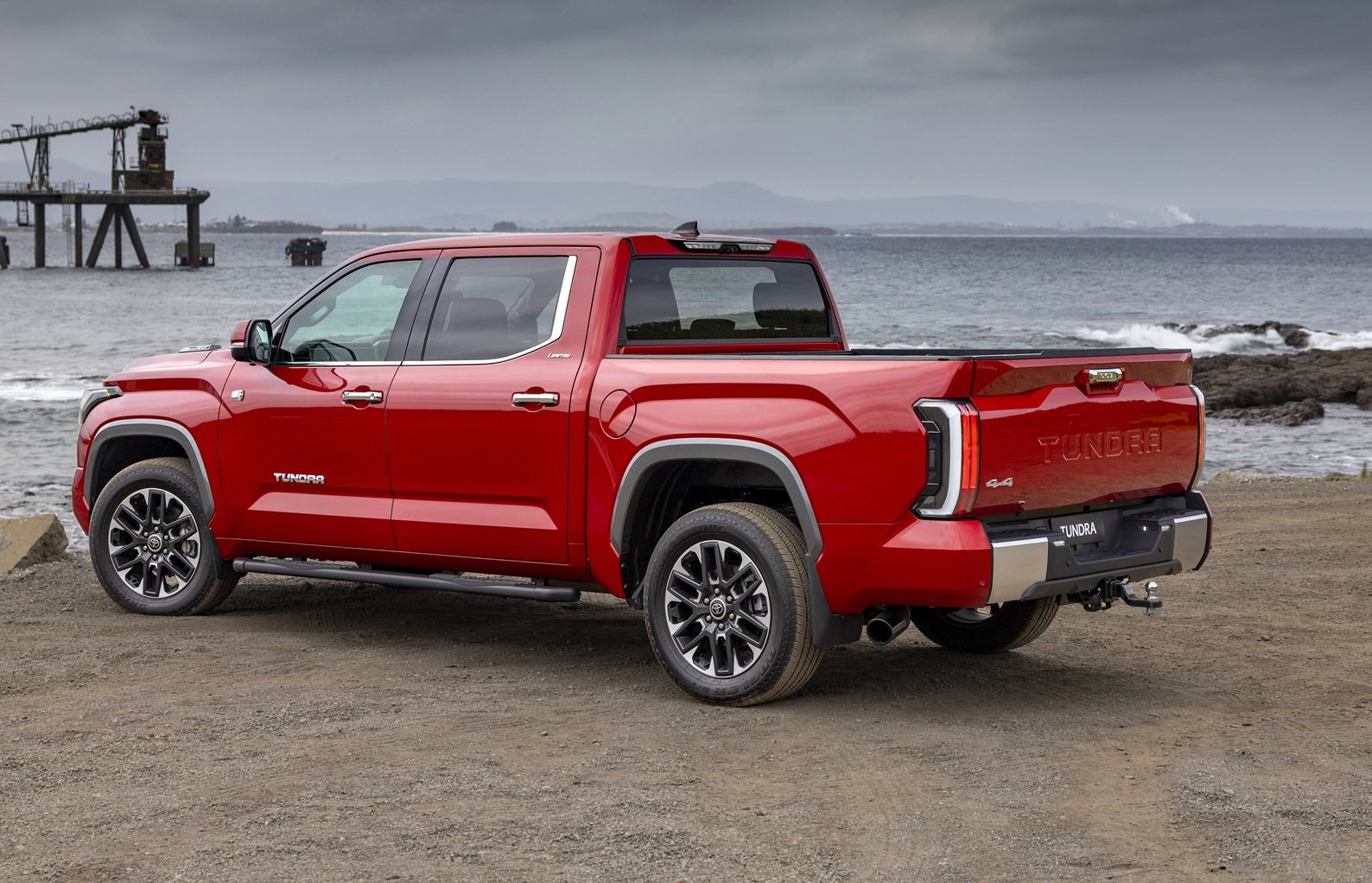


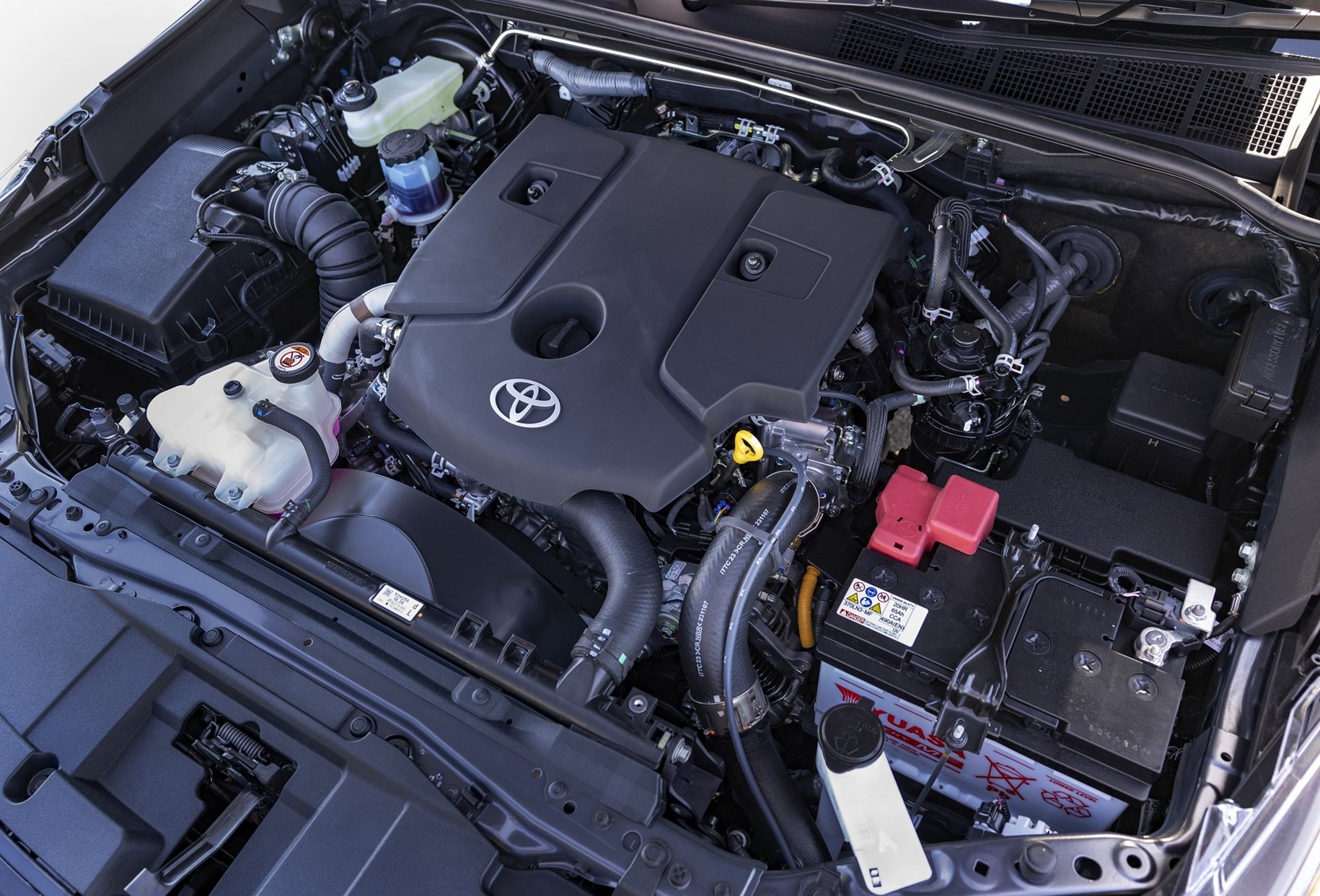



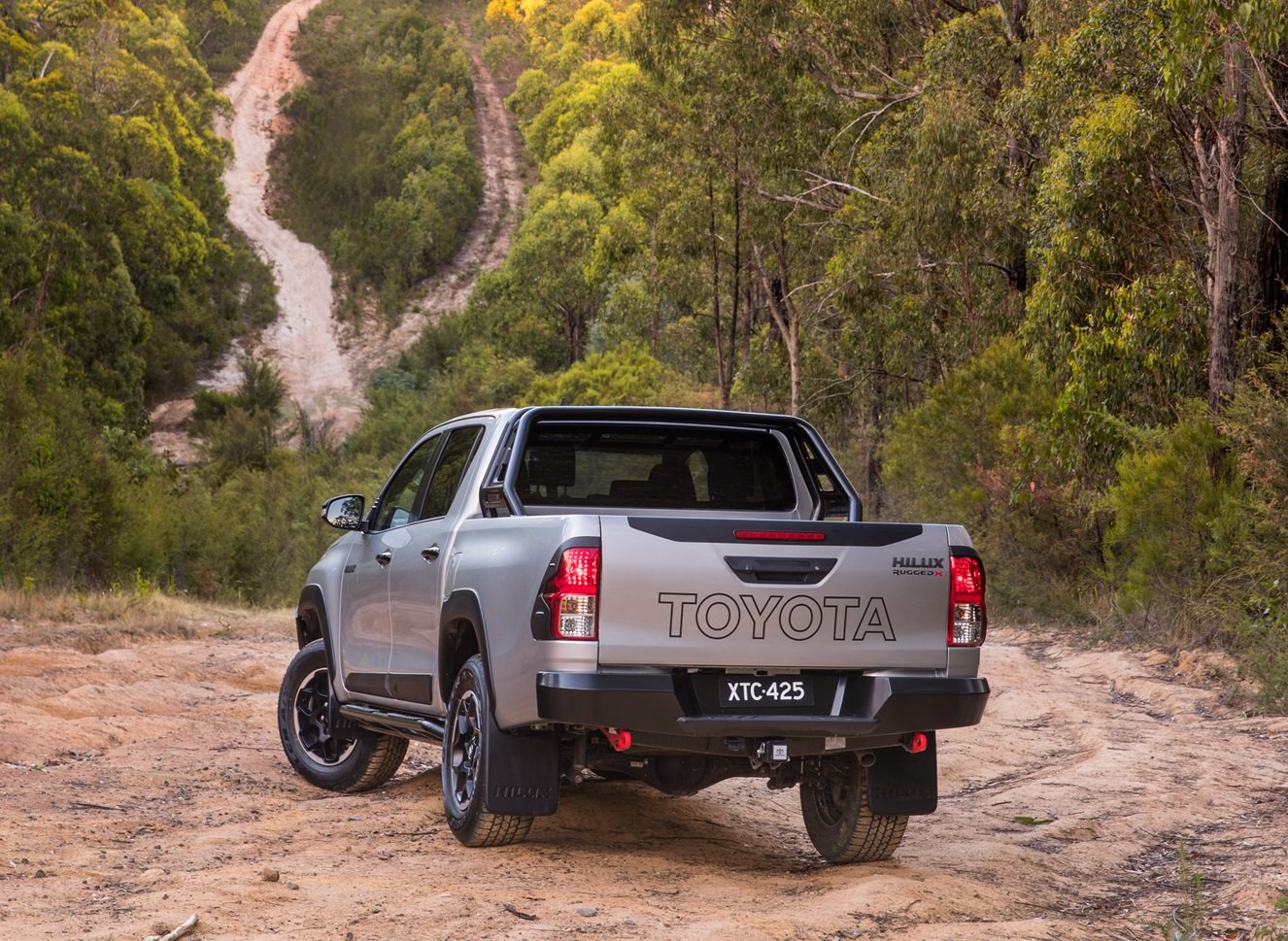
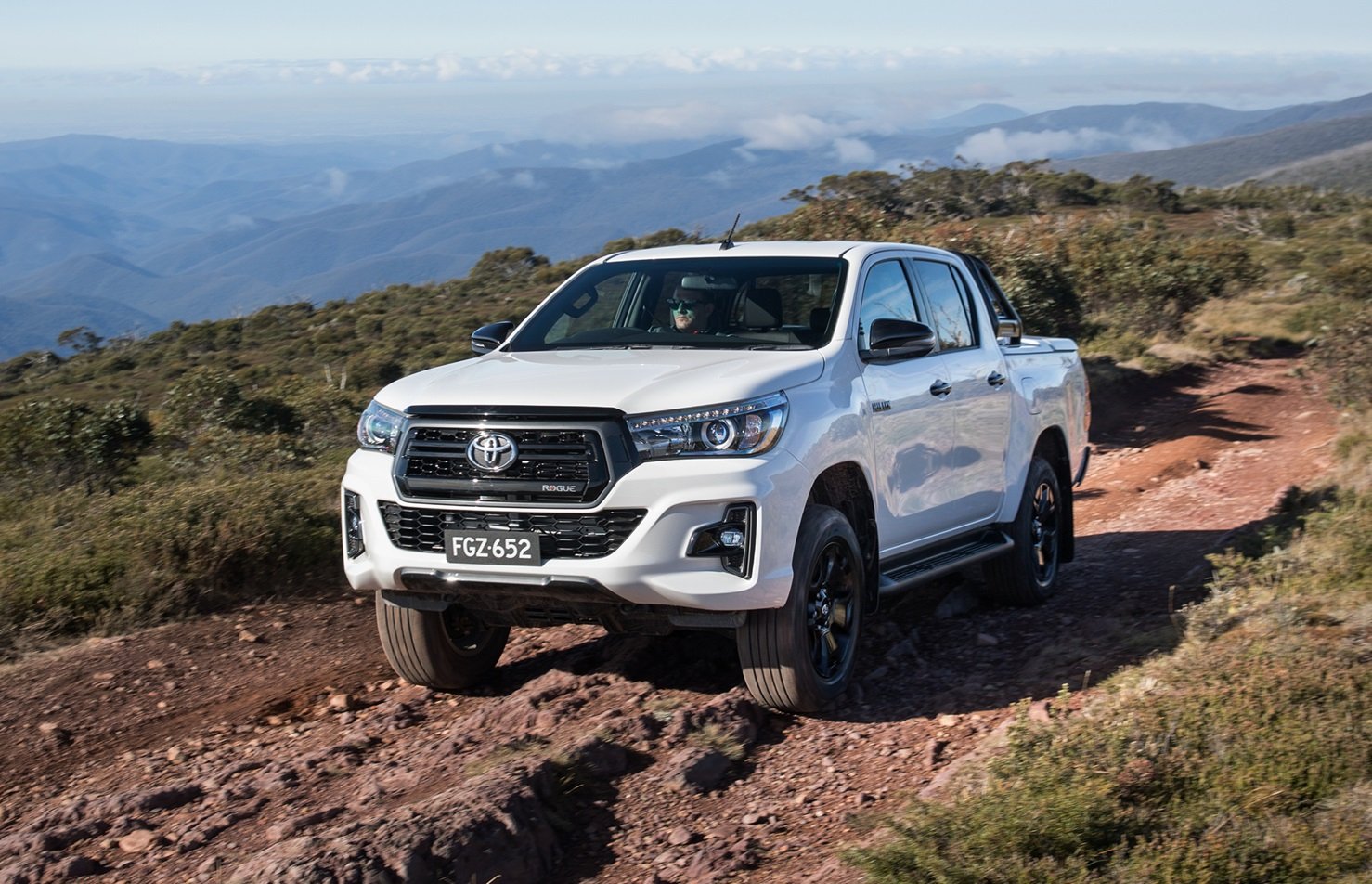



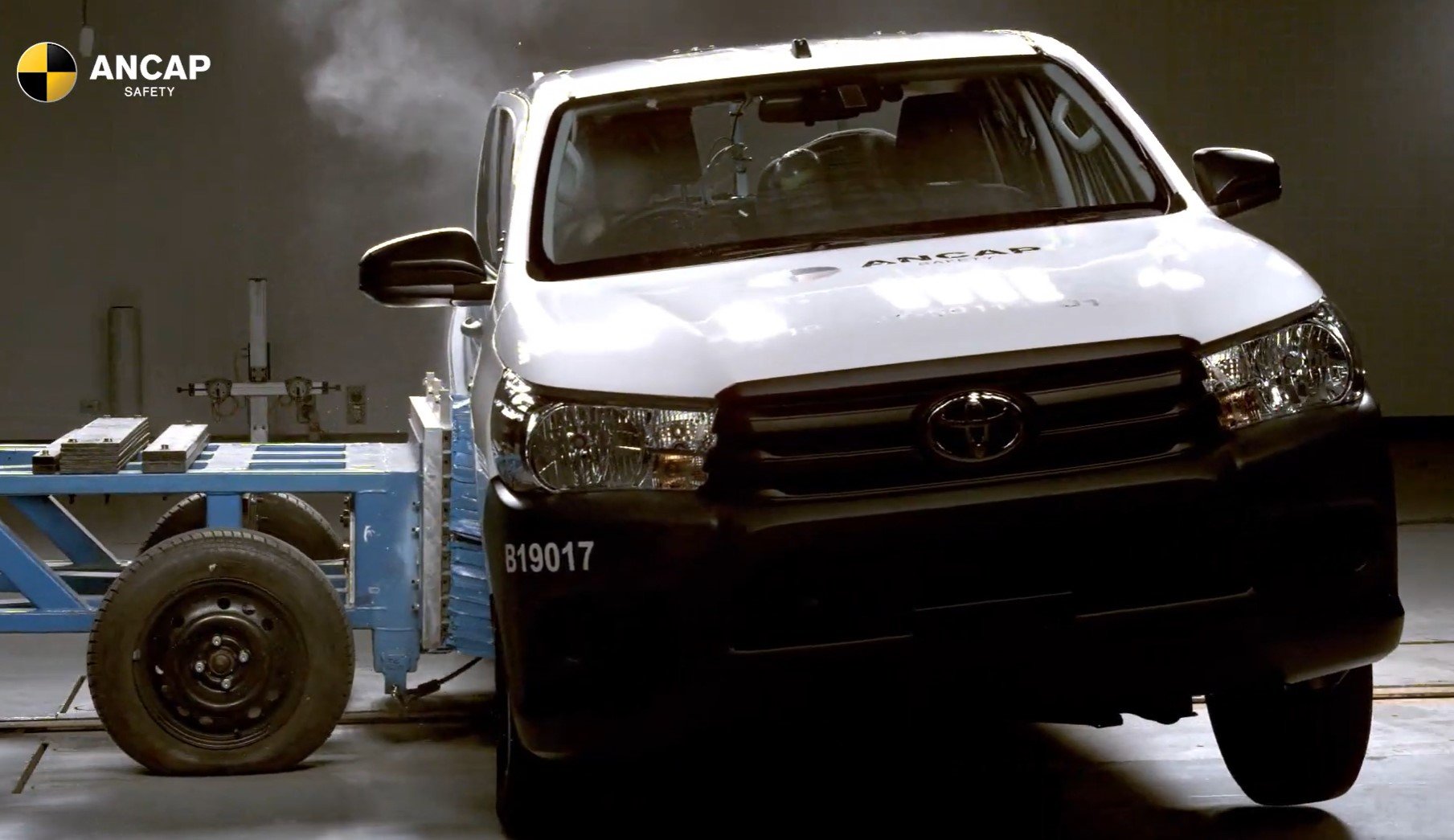
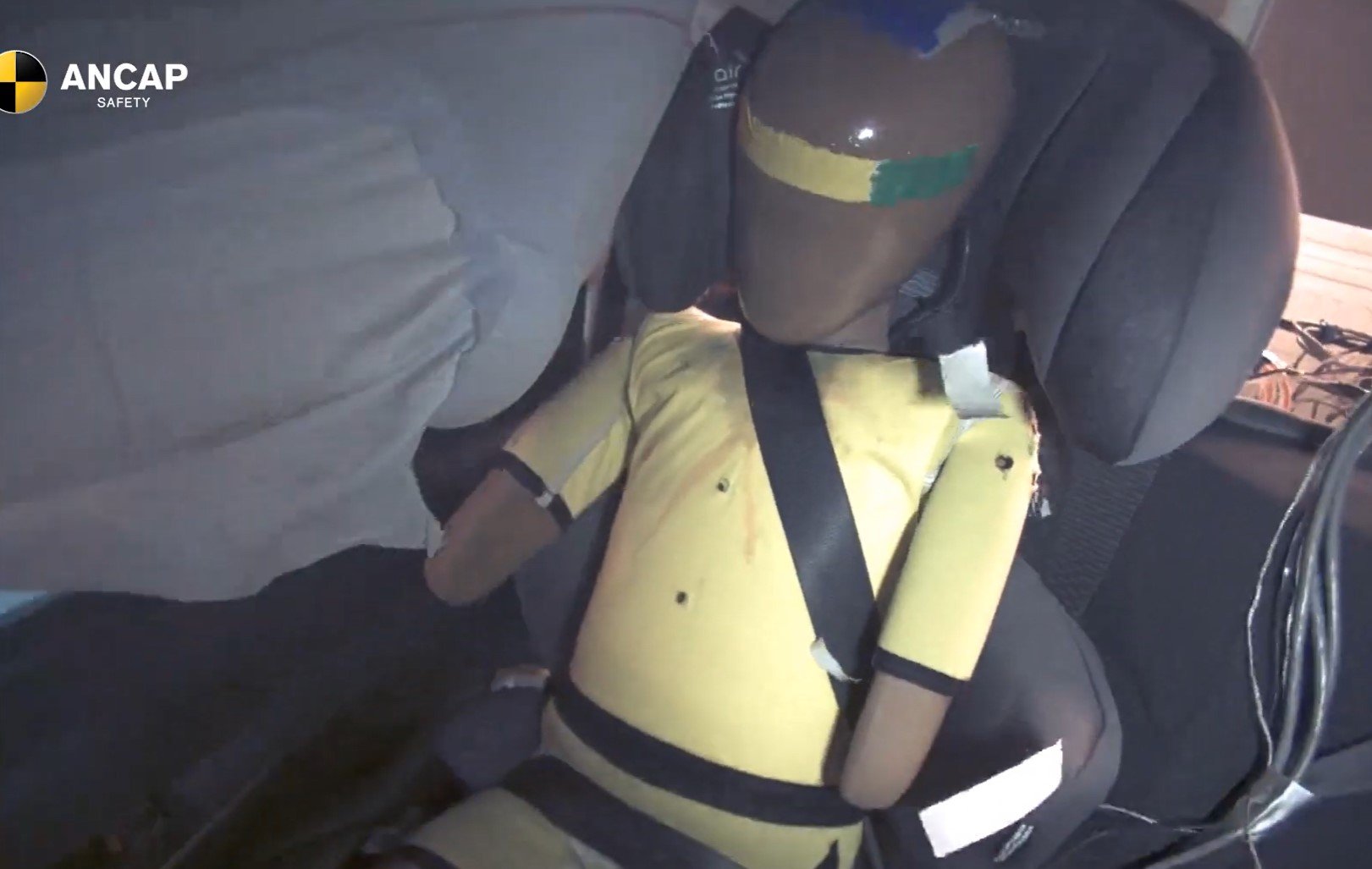






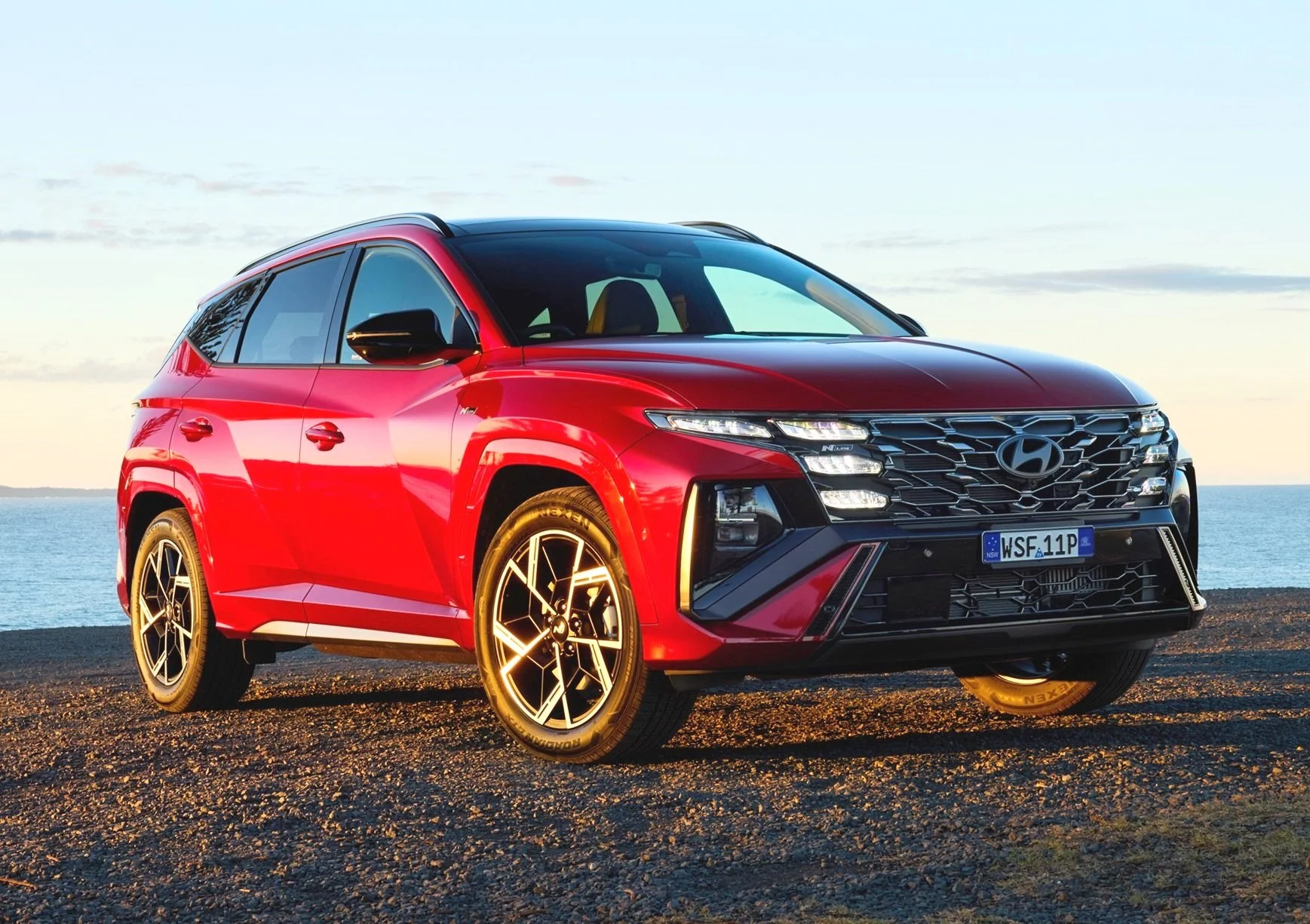









Hyundai Australia is now offering a 7-year warranty to compete with the likes of Kia and the influx of new Chinese brands. But there are conditions you should be aware of before diving in. Here’s what you need to know…